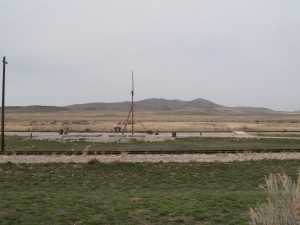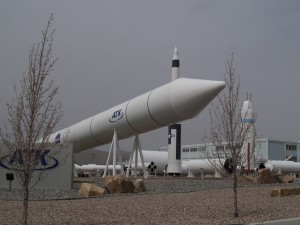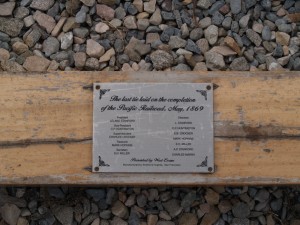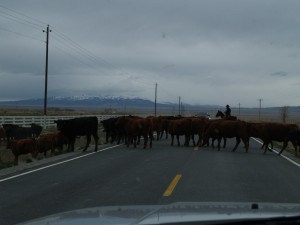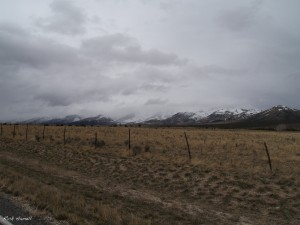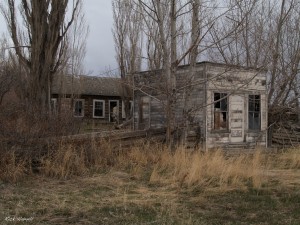Iranian Oil Industry Nationalized
Copied from: Matt’s Today in History Podcast. This is here only for my own edification to look more into this event and it’s consequences.
“Tonight’s transcript was written by Amir Mans of Dubai in the United Arab Emirates. Thanks, Amir, for your hard work in putting this show together.
On this day in 1951, nationalist members of the Iranian parliament led by Dr. Mohammed Mosaddeq nationalized Iran’s petroleum industry. This historic event inspired a lot of other movements in the Middle East region and has had consequences which have continued up to the present day.
The Anglo-Iranian Oil Company (AIOC) had been founded in 1908 following the discovery of a large oil field in south west of Iran and on May 26th of that same year, the first oil well in the region was drilled. It was the first company to use the oil reserves of the Middle East and eventually became the British Petroleum Company (BP) in 1954. High volume production of Iranian oil products eventually started in 1913 from a refinery built at Abadan, for its first 50 years the largest oil refinery in the world. Also in 1913, shortly before World War I, AIOC managers negotiated with a new customer, Winston Churchill, who was then First Lord of the Admiralty. At Churchill’s suggestion, and in exchange for secure oil supplies for its ships, the British government injected new capital into the company and, in doing so, acquired a controlling interest in the oil company and as a result, the British government became the de facto hidden power behind the AIOC.
From 1949 on, sentiment for nationalization of Iran’s oil industry grew. Grievances included the small fraction of revenues Iran received. In 1947, for example, AIOC reported after-tax profits of $112 million and gave Iran just $19.6 million. In late December 1950 word reached Tehran that the American-owned Arabian American Oil Company had agreed to share profits with Saudis on a 50-50 basis. The British Foreign Office rejected the idea of any similar agreement with AIOC.
On 20th March 1951, the Iranian parliament voted to nationalize the AIOC and its holdings, and shortly thereafter elected a widely respected statesman and champion of nationalization, Mohammed Mosaddeq, as Prime Minister. Iran had gained its democratic parliamentary system after its 1906 constitution revolution which was the first event of its kind in Southwest Asia.
This led to a virtual standstill of oil production as British technicians left the country and Britain imposed a worldwide embargo on the purchase of Iranian oil and increased output from its other reserves in the Persian Gulf. In September 1951, Britain froze Iran’s sterling assets and banned export of goods to Iran. The British ratcheted up the pressure on the Iranian government and explored the possibility of an invasion to occupy the oil area. It challenged the legality of the oil nationalization and took its case against Iran to the International Court of Justice at The Hague. The court found in Iran’s favor, but the dispute between Iran and the AIOC remained unsettled.
In the following months, the crisis became acute. By mid-1952, an attempt by the Shah to replace Mosaddeq backfired and led to riots nationwide; Mosaddeq returned with even greater power. At the same time however, his coalition was fraying, as Britain’s boycott of Iranian oil eliminated a major source of government revenue, and made Iranians poorer and unhappier by the day.
The administration of President Truman initially had been sympathetic to Iran’s nationalist aspirations. By 1953 both the US and the UK had new, more anti-communist and more interventionist administrations. Britain was unable to subvert Mosaddeq as its embassy and officials had been evicted from Iran in October 1952, but successfully appealed in the U.S. to anti-communist sentiments, depicting both Mosaddeq and Iran as unstable and likely to fall to communism in their weakened state. If Iran fell, it was theorized that the enormous assets of Iranian oil production and reserves would fall into communist control, as would other areas of the Middle East.
In June 1953, President Eisenhower’s administration approved a British proposal for a joint Anglo-American operation, code-named Operation Ajax, to overthrow Prime Minister Mosaddeq and committed the CIA to execute this assignment. This plan became reality in August 1953 when the democratically elected government of Iranian Prime Minister Mosaddeq was overthrown by the CIA with support from the British government and the Shah was reinstated on the throne. He remained an authoritarian monarch for more than 25 years. Mosaddeq, whose efforts to nationalize the oil industry and democratize Iran had already earned him Time Magazine’s Man of the Year award for 1951 was sentenced to three years imprisonment for trying to overthrow the monarchy, but he was subsequently allowed to remain under house arrest in his village outside Tehran until his death in 1967.
This event inspired a lot of other movements in the Middle East region. Many believe that the fall of the two British allied kingdoms of Egypt and Iraq in the 1950s and the nationalization of Suez Canal in 1958 all were inspired by the movement of Iranian nationalists.
The 1953 coup was the first time the US had openly overthrown an elected, civil government. In the US, Operation Ajax was considered a success, with immediate and far-reaching effect. Overnight, the CIA became a central part of the American foreign policy apparatus, and covert action came to be regarded as a cheap and effective way to shape the course of world events, but the coup caused long-lasting damage to the United States’ reputation.
The joint US-British operation ended Iran’s drive to assert sovereign control over its own resources and helped put an end to a vibrant chapter in the history of the country’s nationalist and democratic movements. The coup was a critical event that destroyed Iran’s secular parliamentary democracy, by re-installing the monarchy of the Shah. These consequences resonated with dramatic effect in later years as it has been widely believed to have significantly contributed to the 1979 Iranian Revolution, which deposed the pro-Western Shah and replaced the monarchy with an anti-Western Islamic Republic that brought to power a group of fanatically anti-Western clerics who turned Iran into a center for anti-Americanism. The Islamic regime in Iran also inspired religious fanatics in many other countries including those who give refuge to terrorists who eventually have gone on to attack the US.
Some Middle East observers have claimed that the anger against the US that flooded out of Iran following the 1979 revolution has its roots in the American role in crushing Iranian democracy in 1953. While this remains just a theory, the reality is that this coup left the most open-minded and civilized people of the Middle East under 25 years of dictatorship and 30+ years of tyranny and brutality at the hands of the Islamic Republic.”
